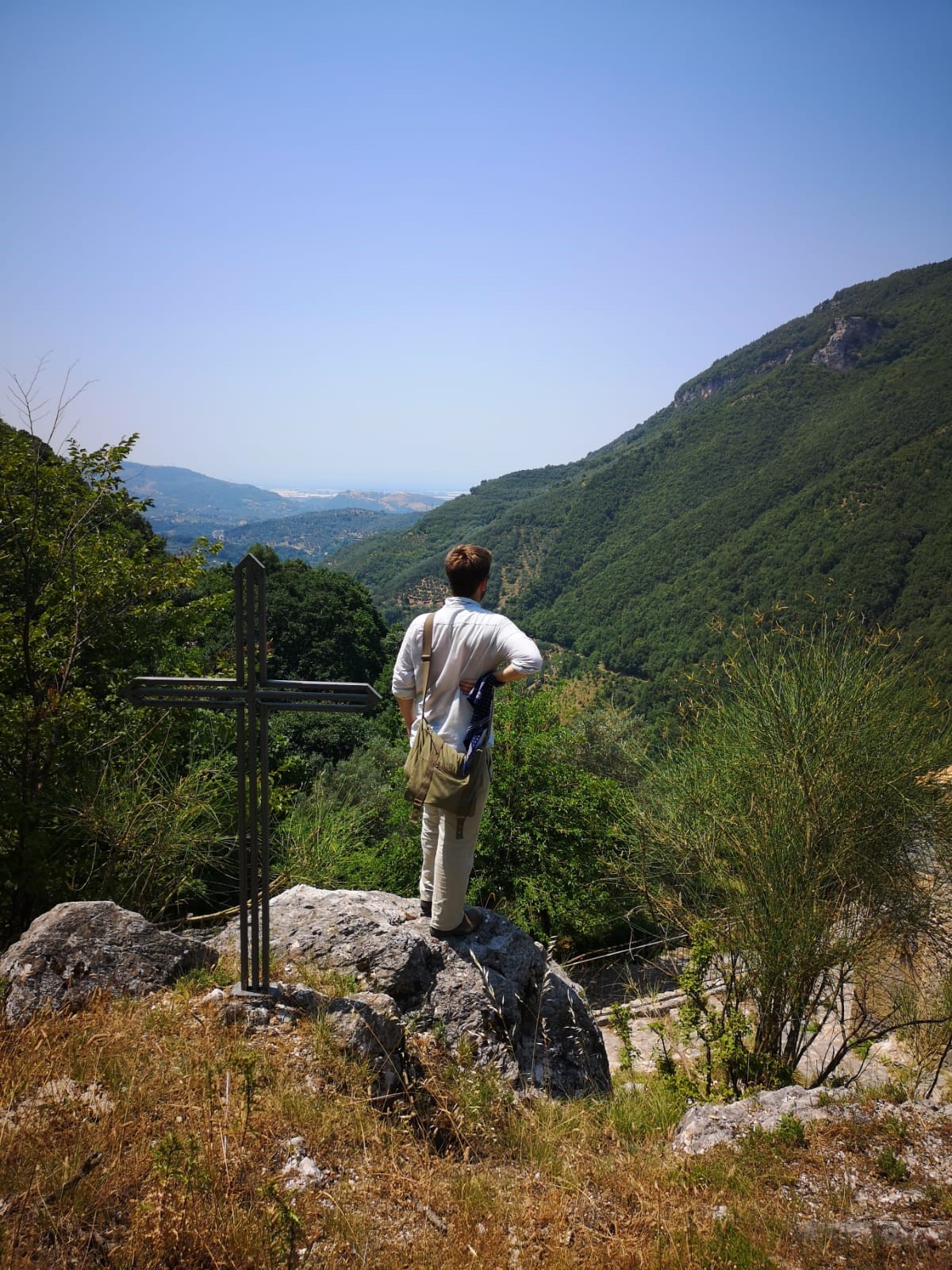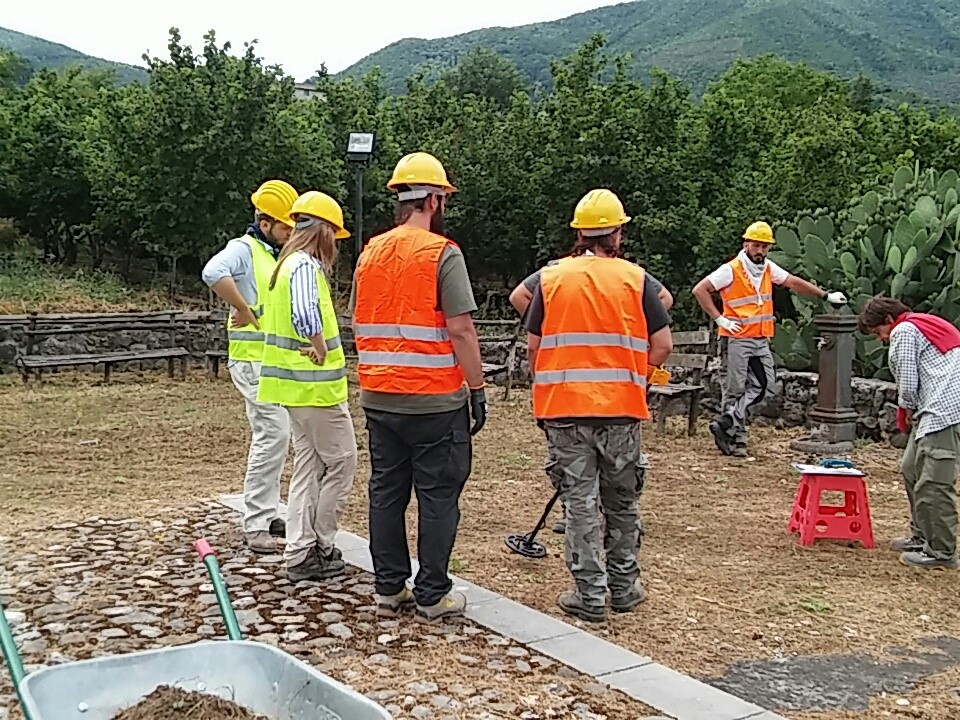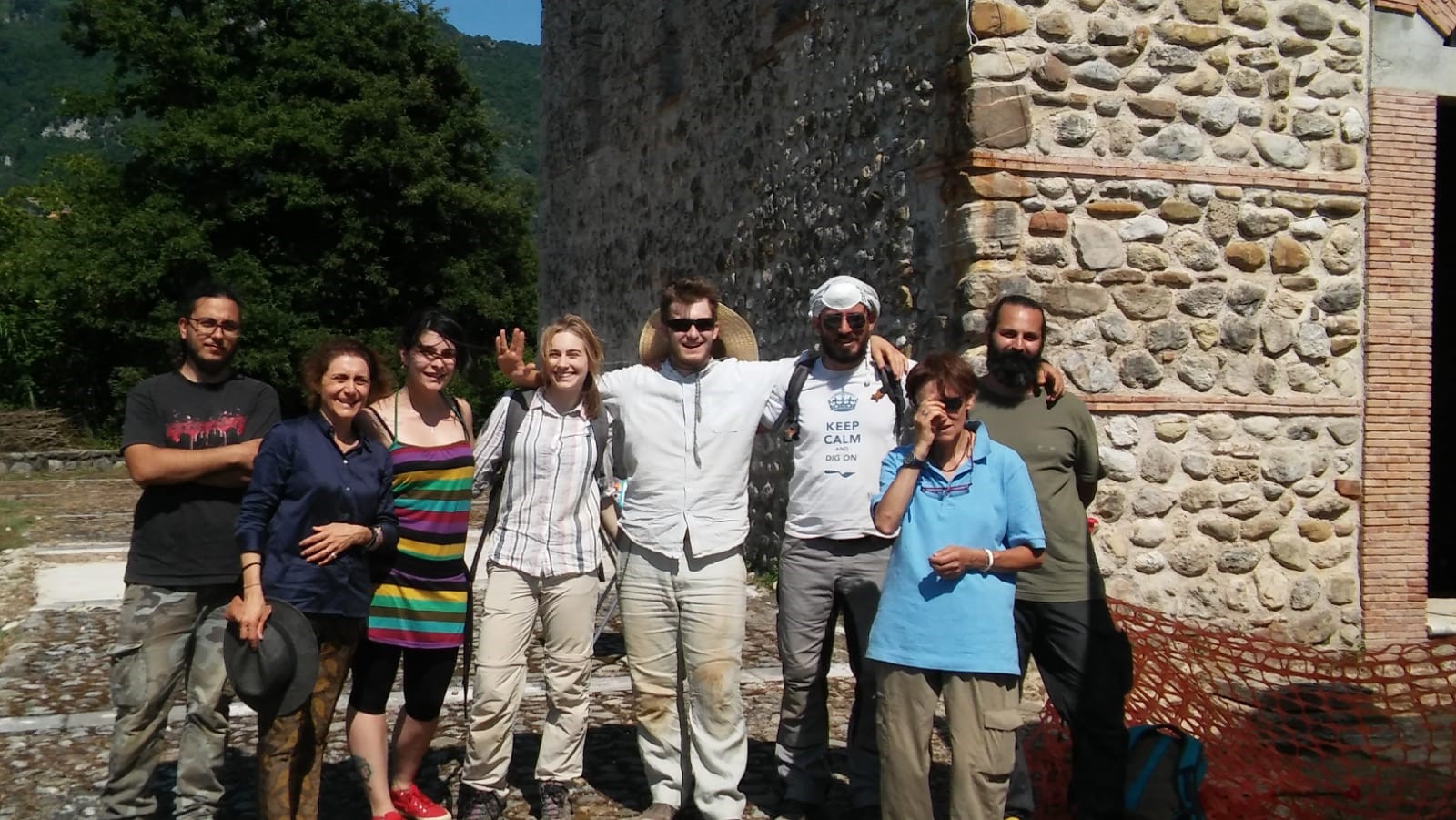by Jack Gunn, BA History
It didn’t take me long to realise that this research scholarship was going to be an experience to treasure. I had dubbed it “My Trip of Firsts” and it would certainly become that in regard to the first time flying on my own, taking part in academic research and field archaeology. However, I was accompanied by E. M. Forster’s A Passage to India and therefore my adventure around the Church of Sant Ambrogio, Occiano, inevitably became “My Passage to Italy”. Just like Forster’s masterful novel, my adventure was full of character but first an explanation of what research the project involved.

Our mission was to aid in the on-going aim of Dr Dan Reynolds, Dr Francesca Dell’Acqua and Professor Chiara Lambert to understand the importance of the Church of Sant Ambrogio, particularly why and how a Milanese saint favoured by the Carolingians, had come to have a church dedicated to him in Campania, a region in which the Lombards dominated. Archeologically speaking, this involved excavating the tombs surrounding the church, both those that would have been inside the atrium (now ruined) and the ones situated just outside the walls. This was interesting to witness and partake in as the earth was gradually filtered through like a historical trifle- though we didn’t manage to reach the final fruity layer because of a lack of time.

What I found particularly interesting, if not eerie, were the skulls that we found. Seeing a human skull, albeit one that has been detached from the rest of its skeleton for hundreds of years, was an odd experience. They are perhaps the definition of macabre. Who were they? What was their outlook on life? What would they make of our age? All the questions whirled round my head as an author would construct a character biography. We had been warned during the application that we had to be sound with human bones, but in the instance it was nothing short of ghastly. Yet it was, in line with humanity’s bizarre interest with the dead, profoundly interesting.
An aspect of the research which I did not expect involved travelling to various sites in order to understand the context of the church. For some reason, I hadn’t applied the same logic as one does to an essay topic i.e. to understand the context, to field research. Therefore, venturing to these sites was fascinating. Our church was situated in a valley, a position obvious from the two castles and two churches whose positions seemed designed to watch our church. It became necessary to gather information about what sort of material and with what methods these neighbouring buildings were constructed in order to establish, or indeed rule out, similarities. One such excursion took us to the church of Sant’Angelo in Formis. To describe this as stunning would be to do it a disservice. It boasts eleventh-century frescoes which still exude a tangible spirituality. Their colours have faded with age, which means they now exist in that charming pastelly hue, making the art not such an assault on the eyes as some of the Baroque paintings can be.

I must comment on the people. I expected individuality on this trip, but not in the abundance that I found. As a whole, the ten-strong band of scholars and would-be academics radiated personality and a passion for the subjects that they were interested in. Though not a medievalist, I adore all of history’s timeline and the passion of this merry band was addictive. A detachment of our party, headed by a Professor John Mitchell, visited Capua one day and managed to enter the usually closed crypt of the medieval court chapel of St Michael. Upon entering down stone steps that seemed to seek darkness, the crypt itself was reminiscent of the Black Hole of Calcutta, but when light was brought to bear on its walls; all descriptions of it as a dank and damp basement were dispelled. Frescoes, albeit muted and damaged by centuries, adorned the stone. It was here that I witnessed raw academia at work. My fellow research scholar and I became mere torch bearers, standing with our phones in illumination of the gorgeous artwork, whilst the members of history’s intelligentsia talked amongst themselves with such intelligent rapidity that it defied the ordinary conventions of conversation. Professor Mitchell, a man full of eccentricity and knowledge, stood at the face of one wall with his pencil and notebook, sketching the paintings whilst descending into what can only be described as Churchillian mumblings about what he was studying. It was a fascinating insight into how academics face and then tackle essentially a blank canvas by suggesting theories and then discussing them with their peers. The whole spectacle was marvellous!

What is left is for me to thank Dr Reynolds for offering this scholarship, Dr Dell’Acqua for being such a wonderful guide to the ways of Italy, and the remaining members of the research party who really made this trip an adventure so memorable.
To those deliberating over whether or not to apply to this scholarship, your deliberation is well-founded but unwarranted. Leave such posturing at the door of the plane and embark on this adventure. Why would you pass up on an opportunity to take part in such exciting historical research? It will be an adventure long-remembered.
